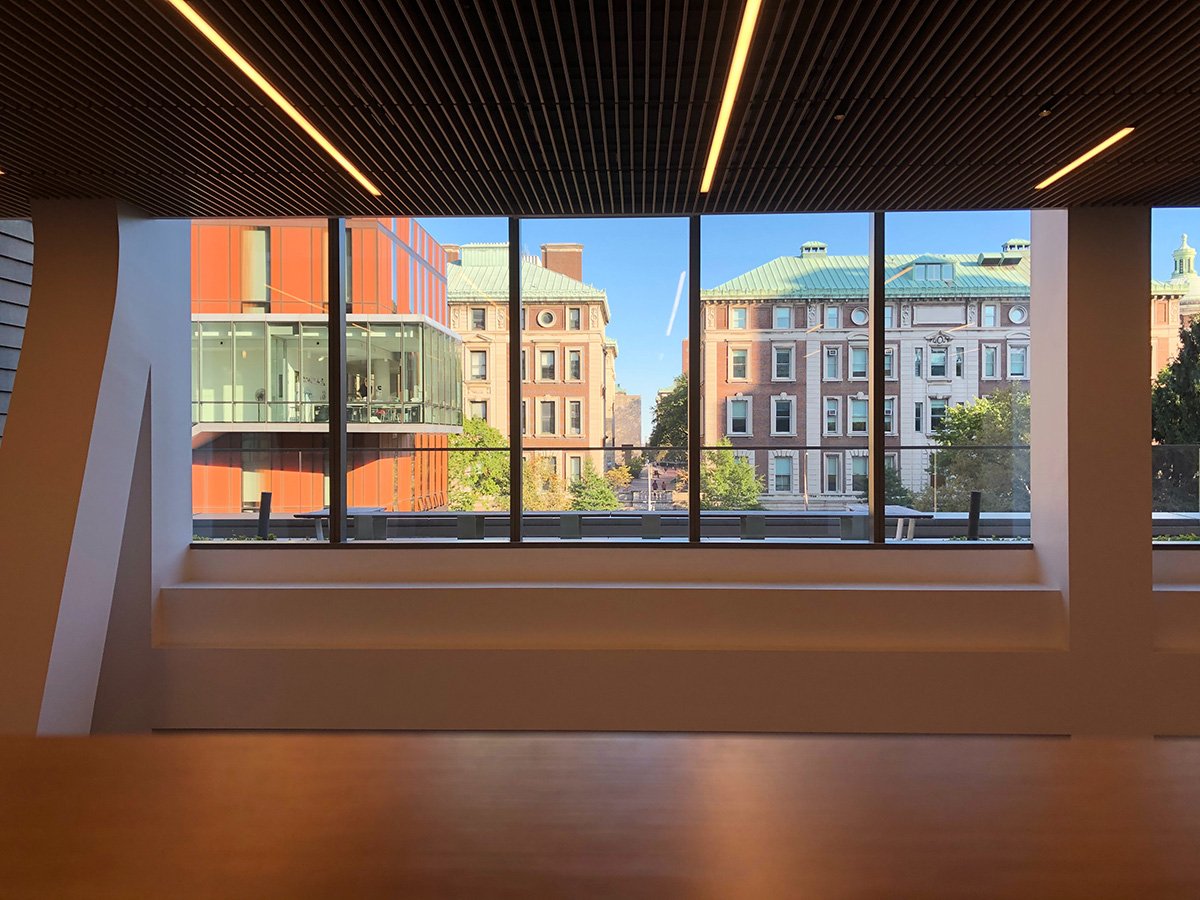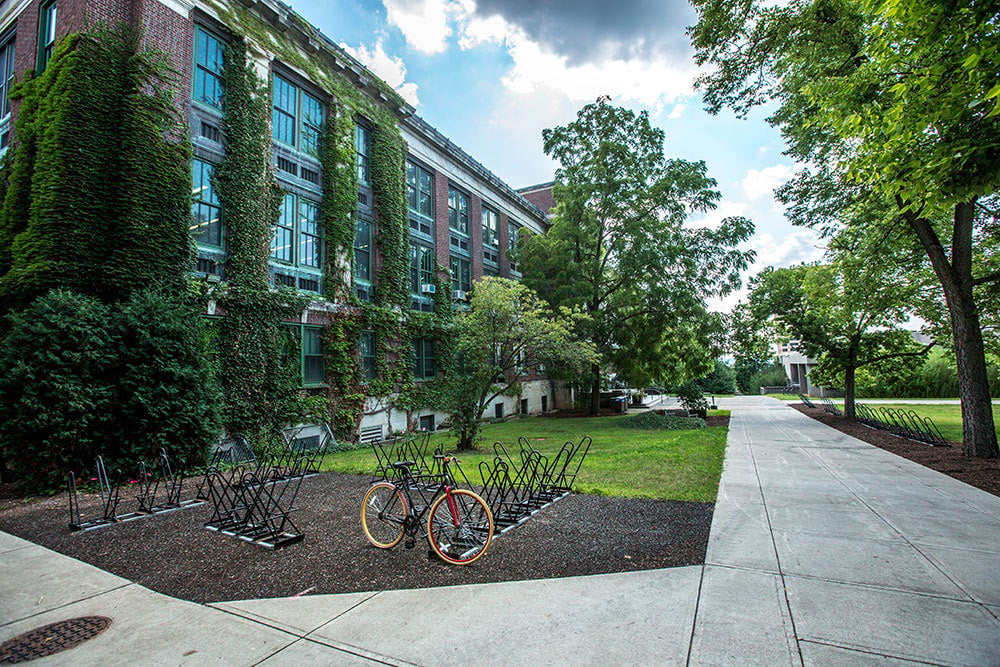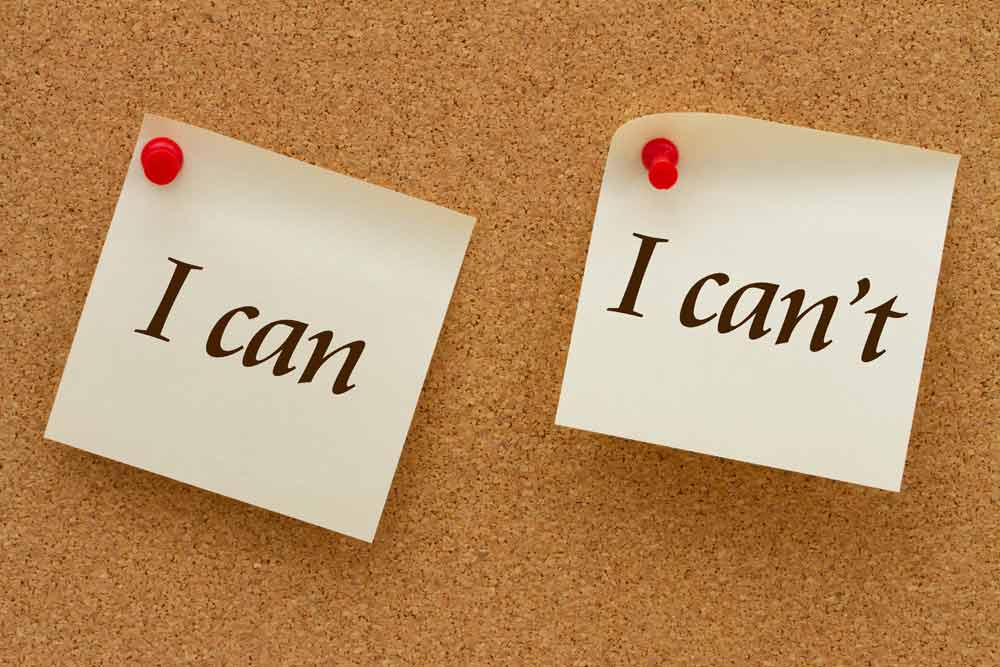 50 kids, 12 staff members. A college dorm full of high school students, and a city alive again after two-plus years of Covid disruption. What kind of alchemy occurs when you add, after two vacant summers, people back into the asphalt and steel, gardens and rivers of New York City? When communal living demands of and offers you new routines and a way out of routines you haven’t thought about in years? With Oxbridge New York 2022 (a program that hadn’t run since 2019), as a staff member, I was part of an incredibly lucky group that got to stumble into answers to these questions. Housed at Barnard College, with Morningside Park on one side and Riverside Park (a wonder) and the Hudson immediately on the other, we began to explore the city in all its variety.
50 kids, 12 staff members. A college dorm full of high school students, and a city alive again after two-plus years of Covid disruption. What kind of alchemy occurs when you add, after two vacant summers, people back into the asphalt and steel, gardens and rivers of New York City? When communal living demands of and offers you new routines and a way out of routines you haven’t thought about in years? With Oxbridge New York 2022 (a program that hadn’t run since 2019), as a staff member, I was part of an incredibly lucky group that got to stumble into answers to these questions. Housed at Barnard College, with Morningside Park on one side and Riverside Park (a wonder) and the Hudson immediately on the other, we began to explore the city in all its variety.
On a personal level, this summer position with Oxbridge New York was especially lucky for me, as I’d been trying to spend an extended period of time in NYC since I myself was in high school. Five weeks in the city is enough time, thankfully, to begin to feel a rhythm of subway and building and avenue, to find a few (or more than a few) dreams made real. Such an experience on its own is a gift, but to have this experience post-Covid and with a group of students who happened to be some of the kindest, most enthusiastic people I’ve ever met meant that New York City would be the setting for an emotional re-entry for all of us. I had forgotten what dorm life meant, the amount of things I could do in a day, what I was capable of. I didn’t want to share a bathroom, adjust to the minimal space of a dorm room, or be stuck with the use of one fridge five floors down. The thought made me anxious. I was afraid of the NYC subway. By the end of the program, I would miss, dearly, (almost) all of these features of my New York experience. A beautiful irony that the shrinking of amenities could open up a world. We are always, always more adaptable than we think.
Games with the students and colleagues in the program office during sign-in time (10-11 pm every night) became one of my favorite parts of my Program Dean role. Black Magic, Mafia, other camp games on the floor in a circle, or Just Dance on the wall-mounted TV (yes, 11 pm is too late for the adrenaline of Just Dance at the volume they wanted it in the office, but the easy elation of these kids who’ve had two years of high school taken from them made it just right). I got to teach them a hip hop class; I had the chance to introduce them to yin yoga. On a day off work, I was able to jump on the 1 train to Times Square and take a class at Broadway Dance Center—fulfilling a decades-old bucket list item of mine. The kids gravitated to 42nd Street at every chance they got: to be sixteen and say, “We’re just going out for dinner in Times Square”! The headiness of it in their voices reminded us to do the same when we could. Central Park astounded us all on different days at different spots. It took me the full month to find that Central Park South (the Mall, the artists, the plaza) was what I’d been looking for the whole time. When the students weren’t immersed in the city, they were taking class (Oxbridge New York is an academics-heavy summer program). They studied business, creative writing, musical theater, photography, fashion, more. But more often than not, their classes drew them to the city’s wonders, too, at the Met, the MoMA, Ground Zero, the Whitney, the Guggenheim. Magnolia Bakery, of course.
Then there were the dreamy days I couldn’t have ever anticipated. I think this must happen more often in New York City than anywhere else, simply by virtue of the fact that the city itself is like a dreamscape; its overabundance gives you more on any given day than you could hope for. Its layers on layers of narratives (fictional, cultural, historical) mean that the city holds places in your heart you didn’t even realize. We took the students to Coney Island—a standout day from the trip. Between cinematic subway rides (the Brooklyn Bridge from the windows at sunset), we all discovered a place we didn’t know we’d been waiting for. The ocean, the rides, the kids sticky from soda and soft-serve. The boardwalk, the hot dogs, and enough roller coasters to make them happily sick to their stomachs on the walk back to our meeting spot at Nathan’s. All of them smiling or sleeping on the return subway — sunburnt, exhausted, and satiated. A perfect oversaturation.
During the last week of the program, I got to take a group of students to Aladdin on Broadway. Initially annoyed that this, out of all options, was the show they had chosen, I was met once again by the full force of NYC magic during a show that was so spectacular with people who were so ecstatic to be there. We waited outside the theater doors after the show and met the actors, then headed to Junior’s for reubens and cheesecake.
Brooklyn again proved full of its own treasures on our Smorgasburg day (the US’s largest weekly outdoor food festival). After an epic journey through hibiscus doughnuts, juice held in a watermelon, chicken kebabs, and a view of Manhattan to drop the jaw, we found the real-life library from A Tree Grows in Brooklyn.
That all of this and more happened in a span of five weeks is still surreal to me. Especially so after Covid. I know this take is colored by the fact that I had a finite amount of time there, that I was part of a pre-packaged experience and a temporary, built-in community. Nor was the community perfect. Did we have a couple meetings with the purpose of scolding the kids back into respectful living? Did we argue amongst ourselves and shake our heads at administrative imperfections? Yes, and sometimes, and way more than once. But the gorgeous paradox of New York City is that it is as much fantasy and confection as it is hard reality. I can’t think of another city where the two are so thoroughly enmeshed. “I just love getting in my bed every night,” a student remarked to me halfway through the month. “Even though it’s so small and it’s like the worst dorm room mattress, I’m so tired and happy from everything we did during the day. You know? It’s that ugly blanket and weird sheets? And I just love it.” I know the feeling exactly.
While my experience was focused on Oxbridge New York, it was a perfect reminder of just how valuable pre-college summer programs are for students. Taking full advantage of each of the three summers available before the college admissions process officially begins is critical for students’ growth and development. These adventures help our students to scaffold their transition to college and better understand what experiences they’re looking to have. Pre-college programs are a little like “restaurant week”; they provide opportunities to sample different learning environments, geography, and subject matter in order to better prioritize and ultimately commit to a “just right” college experience.
For further discussion about college counseling for your family, please contact our office.
By Jordi Rozenman, M.A., College Counselor and Private Tutor
 Boarding schools guide students in becoming independent, broad-minded, and responsible young adults. They offer environments that promote strong academic and social communities and provide rigorous support in ways that day schools cannot. Boarding schools enable students to take responsibility for their learning and growth while also ensuring that students have access to support systems that dynamically meet their needs. In this blog post, admissions directors from elite New England boarding schools share their insights on what boarding schools can offer to students and their families.
Boarding schools guide students in becoming independent, broad-minded, and responsible young adults. They offer environments that promote strong academic and social communities and provide rigorous support in ways that day schools cannot. Boarding schools enable students to take responsibility for their learning and growth while also ensuring that students have access to support systems that dynamically meet their needs. In this blog post, admissions directors from elite New England boarding schools share their insights on what boarding schools can offer to students and their families. Specialized boarding schools offer students flexible, individual and small group instruction tailored to their unique learning needs. For students with ADHD, executive function issues, dyslexia, or other learning differences, a specialized boarding school not only offers students differentiated and targeted instruction as well as seamless access to accommodations, but acceptance into a community. With smaller faculty to student ratios and skillful instructors working collaboratively with learning specialists and related service professionals guided by evidence-based research, specialized boarding schools offer a comprehensive level of support that cannot be matched at other programs. But just like the students themselves, no two specialized boarding schools are exactly alike. In this blog post, we hear from the experts at four top programs in New England to learn how families can select the right school and make the most of the experience once a student gets there.
Specialized boarding schools offer students flexible, individual and small group instruction tailored to their unique learning needs. For students with ADHD, executive function issues, dyslexia, or other learning differences, a specialized boarding school not only offers students differentiated and targeted instruction as well as seamless access to accommodations, but acceptance into a community. With smaller faculty to student ratios and skillful instructors working collaboratively with learning specialists and related service professionals guided by evidence-based research, specialized boarding schools offer a comprehensive level of support that cannot be matched at other programs. But just like the students themselves, no two specialized boarding schools are exactly alike. In this blog post, we hear from the experts at four top programs in New England to learn how families can select the right school and make the most of the experience once a student gets there. As students set out to acquire new skills, understanding the stages of learning and how and where to recognize progress towards mastery can be difficult. The beginning and end of a particular learning process are generally quite clear, but learners often lack vocabulary for all of the micro-steps that occur between “not knowing” and “knowing.” Students regularly articulate thoughts like “I’m not good at this” or “this is easy for me,” but less commonly note nuances like “I’m getting the hang of this concept, though I’m still not able to work fluently” or “I can solve simple problems, but it’s difficult for me to apply this concept in unfamiliar settings.”
As students set out to acquire new skills, understanding the stages of learning and how and where to recognize progress towards mastery can be difficult. The beginning and end of a particular learning process are generally quite clear, but learners often lack vocabulary for all of the micro-steps that occur between “not knowing” and “knowing.” Students regularly articulate thoughts like “I’m not good at this” or “this is easy for me,” but less commonly note nuances like “I’m getting the hang of this concept, though I’m still not able to work fluently” or “I can solve simple problems, but it’s difficult for me to apply this concept in unfamiliar settings.” My Learning Springboard students all know the importance of studying for the
My Learning Springboard students all know the importance of studying for the